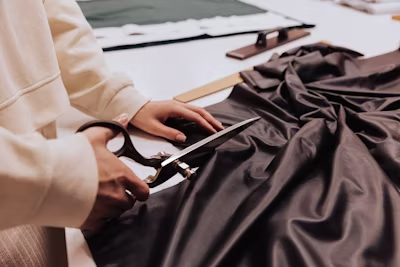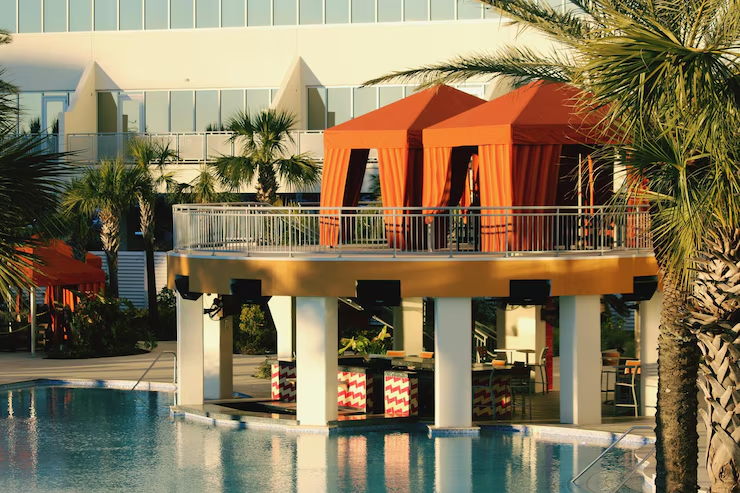With the rates of crime varying and safety in residential areas increasingly being of great concern among homeowners, one of the innovative solutions to that situation is bulletproof glass for homes, a technology previously used mainly in the construction of banks, embassy buildings, and other military vehicles and making its way into domestic architectural design.
Is this amount of security needed in a residential home? So, what does it really mean using bulletproof glass in domestic applications? And how does it fare against other kinds of security glass?
In this article, we are going to have a breakdown of all the information you need to know including technologies in residential ballistic glass and how beneficial it is in a home concerning the investment.
What Is Bulletproof Glass for Homes?
Although the term is often referred to as bulletproof it is mostly accepted by the experts that it should be referred to as bullet-resistant, as there is no glass, which could be all-resistant to ballistic damage of all types. A bullet resistant glass is a kind of laminated glass based on several layers of polycarbonates, acrylic, and glass and having the property to absorb the energy of a bullet and glorifying the glaze.
In home settings, this glass is typically used in:
- Entryway doors
- Ground-floor windows
- Sliding glass doors
- Safe rooms
- Garage-facing windows
How It Works
Kinetic energy of a bullet is absorbed by the glass and is distributed throughout it; thus, it does not shatter or pierce the glass. Layers are more protective, the more layers, the more weight and the more indebtedness.
Common Types of Protective Glazing for Homes
Depending upon the level of the threat that you need to protect, bullet-resistant solutions differ in strength and structure. These are the most frequent ones:
1. Laminated Safety Glass
- Made by bonding two or more glass layers with a plastic interlayer (usually PVB or polycarbonate).
- Offers shatter-resistance, ideal for burglary prevention.
- Not always ballistic-rated but provides a baseline security improvement.
2. Acrylic Bullet-Resistant Panels
- Lightweight and optically clear.
- Can stop small-caliber rounds like .22 or .38.
- Commonly used in interior security partitions or smaller residential windows.
3. Polycarbonate and Glass-Clad Polycarbonate (GCP)
- Combines the appearance of standard glass with multi-shot resistance.
- Offers high performance with reduced thickness and weight.
- Great for front doors and larger windows in high-risk areas.
How Bulletproof Glass Compares to Other Security Options
| Feature | Bulletproof Glass | Standard Glass | Laminated Glass | Hurricane Glass |
| Break-in Resistance | High | Low | Moderate | Moderate |
| Ballistic Resistance | Yes | No | No | No |
| Noise Reduction | Excellent | Poor | Good | Good |
| UV Protection | Optional | Limited | Optional | Optional |
| Cost | High | Low | Moderate | Moderate |
Who Needs Bulletproof Glass at Home?
High-Risk Neighborhoods
In case your house is situated where the crime rate or burglaries with the use of firearms are prominent, anti-intrusion glazing may provide you with a sense of security.
Public Figures or High-Net-Worth Individuals
High-security glass windows are usually required of celebrities, politicians and CEOs forming part of a comprehensive security.
Safe Room Integration
When people are making safe rooms inside their homes, it is highly advisable to put a bulletproof window especially on those safe doors facing outside.
Pros and Cons of Installing Bulletproof Glass in Homes
Pros
- Better Security: Prevents bullets, blunt objects, and even forced intrusion attempts.
- Increased Property Value: Security-focused upgrades appeal to buyers in high-risk markets.
- Sound Insulation: Provides excellent acoustic insulation from outside noise.
- Weather Resistance: Some bullet-resistant options are hurricane-rated as well.
Cons
- High Cost: Ranges from $50 to $100 per square foot, depending on rating level.
- Heavy Weight: May require structural reinforcement for existing frames.
- Limited Aesthetics: Slightly thicker and may lack the clarity of standard residential glass.
- Not a Standalone Solution: Should be combined with secure locks, frames, and monitoring systems.
Installation Considerations: What Homeowners Should Know
Proper installation is key to maximizing performance. Here are essential factors to consider:
1. Frame Compatibility
Not all window frames can support the weight of secure glass installations. You may need custom or reinforced framing.
2. Wall Integration
If retrofitting, you might need to adjust the wall cavity depth or window opening size.
3. Certified Installers
Always work with contractors familiar with residential ballistic glass. Incorrect installation can void warranties or compromise performance.
Understanding UL Ratings for Bulletproof Glass
The Underwriters Laboratory (UL 752 standard) classifies bullet-resistant materials into levels:
| UL Level | Caliber Resistance | Typical Application |
| Level 1 | 9mm, 3 shots | Residential low-risk areas |
| Level 2 | .357 Magnum | High-risk entryways |
| Level 3 | .44 Magnum | Safe rooms |
| Level 4+ | High-powered rifles | Government and military use |
For homes, Levels 1–3 are most applicable. These provide adequate protection from most civilian firearm threats.
Cost Breakdown: What to Expect Financially
While bulletproof glass for homes is an investment, its cost varies by materials, ratings, and labor. Here’s a general breakdown:
| Component | Estimated Cost (USD) |
| Bulletproof Glass Panel | $50–$100 per sq. ft. |
| Reinforced Frame System | $500–$1,000 per window |
| Professional Installation | $300–$600 per window |
| Custom Safe Room Buildout | $10,000+ |
Tip: Consult with multiple providers for protective glazing solutions to compare pricing and options tailored to your home’s architecture.
Bulletproof vs. Hurricane-Proof Glass – What’s the Difference?
Although hurricane glass offers impressive shatter resistance, it isn’t tested to withstand bullets.
| Feature | Bulletproof Glass | Hurricane Glass |
| Stops bullets | Yes | No |
| Wind/impact tested | Some types | Yes |
| Cost | Higher | Lower |
| Application | High-security | Storm protection |
Some homeowners in hurricane-prone yet high-crime areas choose hybrid solutions that meet both needs, although this significantly increases costs.
Maintenance and Longevity
Bullet-resistant glass is low maintenance:
- Clean with non-abrasive materials.
- Avoid high-alkaline cleaning agents.
- Expect a lifespan of 20–30 years if properly maintained.
Future-Proofing Your Home with Smart Security Glass
The rise of smart security technology is merging with glass innovations. Some bullet-resistant glass products now include:
- Smart tinting for privacy
- Embedded alarms triggered by impact
- Solar-reflective coatings
While these add to the cost, they also offer energy efficiency and advanced intrusion alerts, making them ideal for modern smart homes.
Is Bulletproof Glass Right for You?
Here’s a quick checklist to help you decide:
- Do you live in a high-crime neighborhood?
- Are you or someone in your household a public figure?
- Do you want to create a safe room with maximum protection?
- Are you concerned about break-ins involving firearms?
- Do you have the budget for premium protective features?
If you answered yes to two or more, then bulletproof glass for homes may be a valuable consideration.
Add An Extra Layer of Assurance to Your Home
Although not all homes require bulletproof windows, the ones that do possess an added advantage of experiencing more than understanding security because those homes have an added advantage of having a shield against the unimaginable. Bullet-proof glass is a solution as safe as it used to be unattainable, concrete but stylish, and useful in both aesthetic and security-requiring applications regarding home safety.
As technology keeps on shaping up and as reasons to get anti-break-in resistant windows increases, it could well be possible that more households will start spending on this advanced type of protection; not due to fear but the wisdom of looking ahead.











